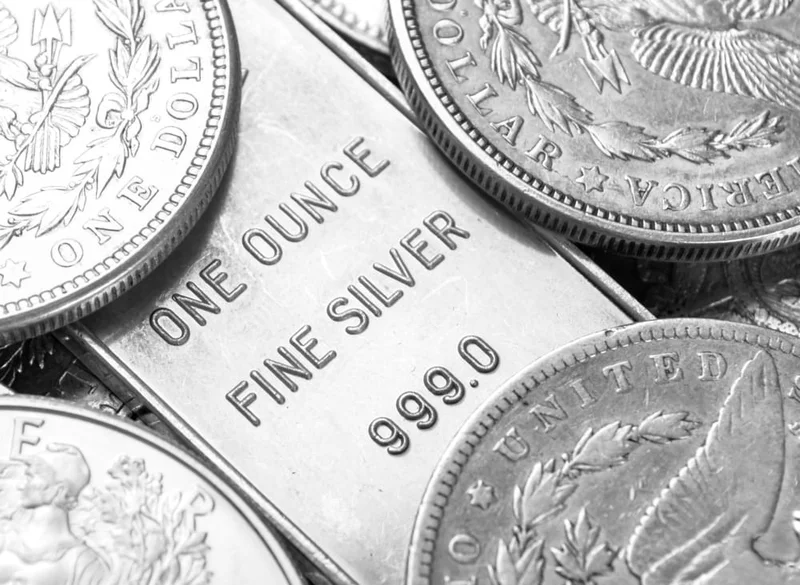ABSOLUTE DIRECTIVE: NARRATIVE STANCE SCAN
* Event: Analysis of precious metals market trends and their underlying drivers.
* Definitive "Ending"? No. The situation is ongoing, with price forecasts and speculation about future market behavior.
* Conclusion: The article will adopt a forward-looking and exploratory tone, focusing on anticipation and analysis of an unfolding trend.
*
For months, the financial world has been fixated on gold. Watching it smash through the $4,000 per ounce barrier has become the new spectator sport for investors, a seemingly clear referendum on inflation, interest rates, and geopolitical instability. The headlines write themselves. But the real story, the one with sharper teeth and more immediate implications, isn't happening in the yellow metal. It's happening in its less glamorous, more volatile cousin: silver.
While gold has posted an impressive 54% gain this year, spot silver is up almost 70%—to be more precise, 69% year to date. This isn't just a statistical curiosity. This is a discrepancy that signals a fundamental shift in the market's psychology. Gold has always been the asset of choice for central banks and sovereign wealth funds—the slow, deliberate hedge against systemic collapse. It’s the financial equivalent of building a bunker. Silver, however, is something different. It’s the market’s nervous system, a high-frequency indicator of not just fear, but the type of fear currently coursing through the global economy.

To understand why, you have to look past the simple inflation narrative. Macquarie Group strategist Thierry Wizman correctly identifies silver as an "easy-access global inflation haven," but that's only half the equation. The metal's dual identity as both a monetary asset and a critical industrial component makes it a unique barometer. It’s like a seismograph that measures two different types of tremors at once. Gold’s price reflects a slow, tectonic shift in geopolitical plates. Silver’s price reflects the high-frequency vibrations of immediate, widespread anxiety and industrial demand, telling you the ground is already shaking. This recent outperformance suggests the anxiety is winning.
The synchronized rally across precious metals isn't a speculative bubble. According to Saxo Bank's Ole Hansen, it points to a "rotation into 'tangible stores of value'," a structural change driven by something far more profound than next quarter's inflation print. The core of this shift is the erosion of trust. The weaponization of the US dollar and payment systems, particularly following the sanctions against Russia, has sent a clear message to the rest of the world: your reserve assets are only yours with permission.
This has triggered an unprecedented wave of gold buying by central banks, a clear attempt to de-risk from the traditional US-centric financial system. But this is the part of the data that I find genuinely telling: the outperformance of silver and platinum suggests this crisis of confidence is no longer confined to the halls of sovereign institutions. It has gone retail. It has gone mainstream. This trend is a key reason Why investors are flocking to silver and platinum, not just gold. When smaller investors and funds flee to safety, they often find the lower price point and higher liquidity of silver more accessible than the institutional heft of gold.
The numbers supporting this crisis of faith are stark. The United States now spends more on interest payments for its national debt than it does on its entire defense budget. Let that sink in. For decades, US Treasuries were considered the global "risk-free" benchmark. The market is now making a subtle but critical distinction. As Hansen notes, "'risk-free' and 'trust-free' are no longer synonymous." An asset can be guaranteed to pay you back in dollars while simultaneously being a poor store of value if confidence in that currency, and the system backing it, is in terminal decline. This rally isn’t just a hedge against the dollar losing value; it’s a hedge against the dollar losing its authority.
The question, then, is how we are measuring this sentiment. Much of the analysis focuses on central bank disclosures and flows into large ETFs (like the ones Goldman Sachs cites in its upgraded $4,900 gold forecast). But this methodological focus might be missing the bigger picture. How much of silver's explosive move is being driven by private, off-exchange physical accumulation? The data on this is notoriously opaque, but the price action suggests a powerful undercurrent of demand that isn't fully captured by institutional reports. We might be looking at the tip of the iceberg, with the bulk of this "trust-free" rotation happening quietly in private vaults and safe deposit boxes around the world. What does it mean if the most significant market move of the decade is happening in the shadows, away from the neatly reported figures?
Ultimately, gold is a lagging indicator. It’s the official story of how large, nation-state actors are preparing for a new world order. It’s a slow, deliberate repositioning. Silver is the real-time, unvarnished truth. Its volatility and accessibility make it the preferred vehicle for a much broader, more dynamic, and arguably more panicked cohort of market participants.
The fact that it is leading gold on a percentage basis isn't a fluke. It's a signal that the fear of counterparty risk and systemic decay has broken containment from the rarefied world of central banking and is now spreading virally through the wider market. Gold tells you what governments are planning for. Silver tells you what everyone else is afraid of right now. And right now, it is screaming that the old reassurances of the financial system are no longer enough. This isn't just another rally; it's a measurement of doubt.